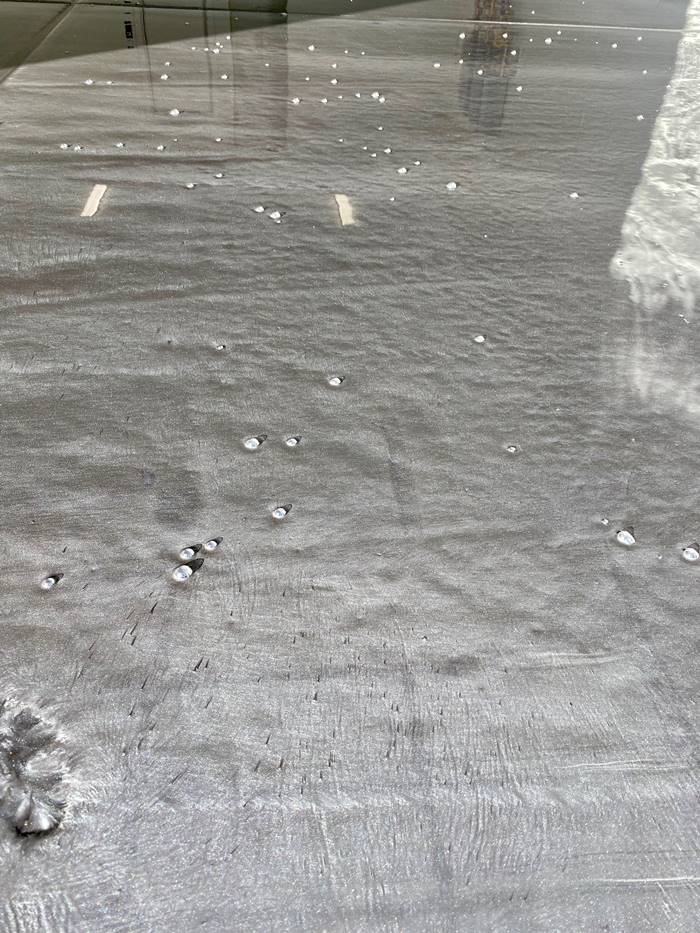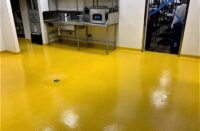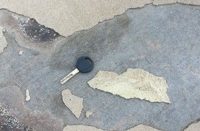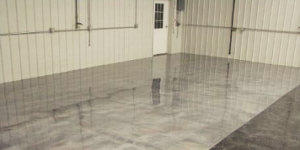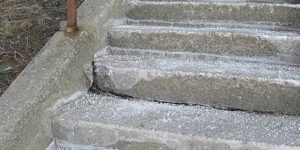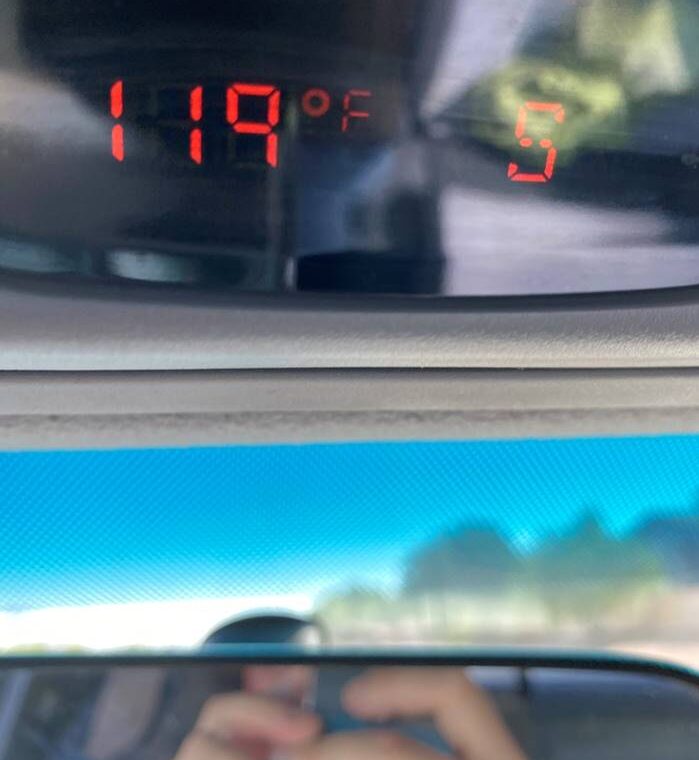
Photos courtesy of Quality Epoxy
Summer is here and depending on where you reside, some places are hotter than others. I live in the greater Phoenix, Arizona, area where summer temperatures can be very challenging when working with 100% solids epoxy and metallic pigment. Not only do you need to pay attention to the heat, you need to pay attention to sun exposure, ambient air temperatures and the heat of the concrete you’re going to coat. All of these are important to factor in when applying metallic epoxy in heat.
When dealing with epoxy and urethane, you must remember they are nonbreathable. Unlike breathable acrylics, it’s completely different with epoxy and urethane. For those who are using or would like to work with 100% solids you have to remember two things that will save your product from flashing on you. Keep your product cool. And once mixed in the bucket, get it out of the bucket ASAP.
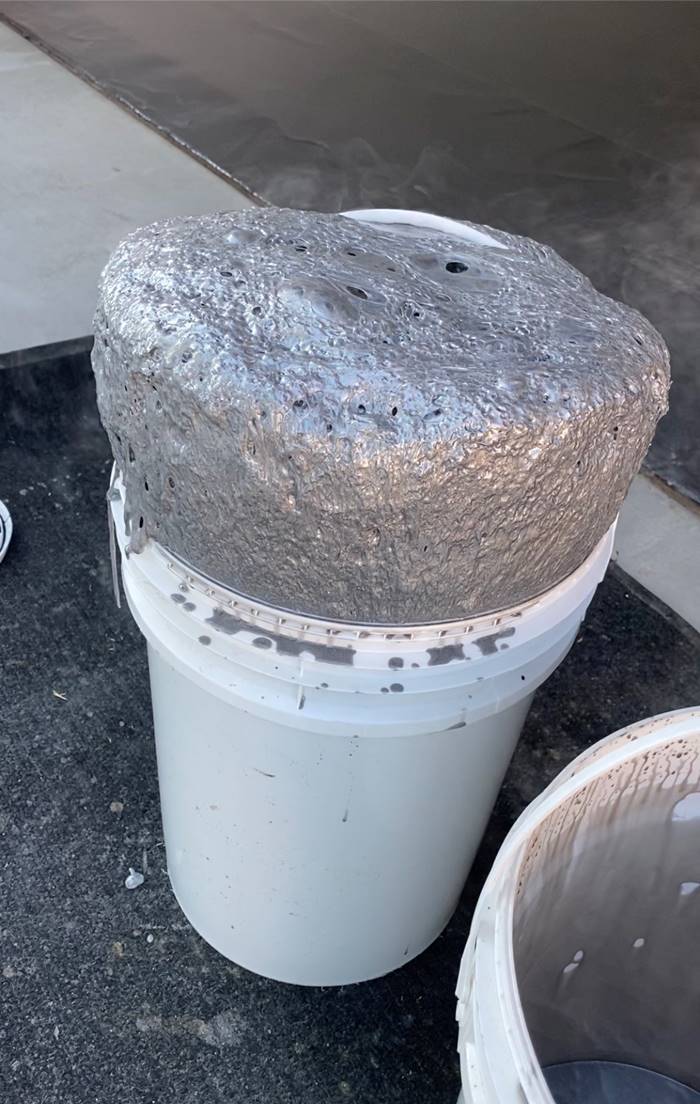
If you leave 100% solids in a bucket on a hot day, the contents will flash and you’ll have to go get more. I’m not trying to scare anyone from using 100% solids. I just want to bring this to your attention because it’s extremely important to understand how this all works.
Sizzling hot
In Phoenix, this summer has been really hot. The season arrived very early and during the last two weeks of May we were already at 115 degrees F. I had an auto detail office to coat and because my mindset was still on winter, I wasn’t mentally ready or prepared for summer heat.
This auto detail job took about 30 gallons. I had all the product lined up outside in my staging area and the epoxy heated up very fast. This was very stupid of me. Within 5 minutes of my wife and me mixing all seven buckets, they got so hot the epoxy reached its flash point. Within seconds, the buckets were smoking from heat and cracking. A few even melted. When I took a reading with my temperature laser gun, the product and buckets were at 230 degrees F.
Cure times are affected by ambient and slab temperatures. Never coat a garage, patio, concrete driveway or any slab with either 100% solid epoxy or polyaspartic that’s in direct sunlight during application.
Why? The concrete slab has heated up and it’s like throwing water on a very hot frying pan. Your product will cook and you won’t be able to move it around for coating.
How to properly install in extreme heat
Don’t let summer heat worry you. If you’re coating a commercial building that has A/C, you’re good. If there are windows that get east or west exposure, take that into consideration. These windows will generate heat and your product could outgas even though the room is air-conditioned. So in this case, apply your product opposite of sun exposure.
As for garages, patios or anything outside, the rules and guidelines are still the same. Do not work in the direct sunlight as it’ll cook your product and your job will be a redo. Sun and heat are your worst enemy in this industry.
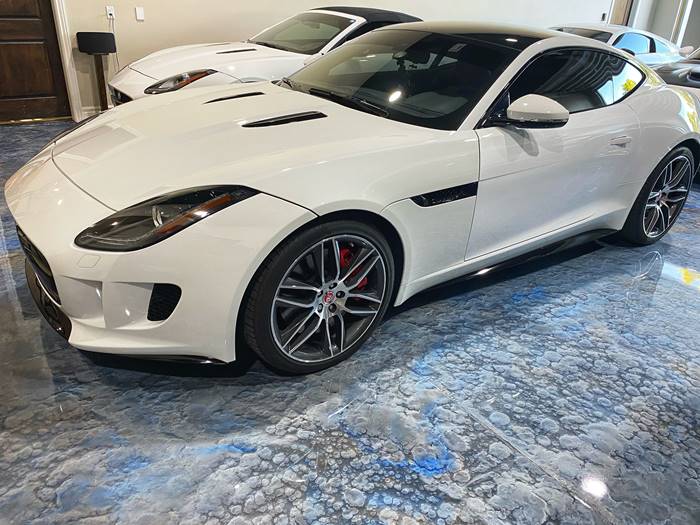
Here are some recommendations on how to not stress over summer heat.
- For outside jobs and garages, apply your 100% solids in the early morning before the ambient temperature heats up. Here in Phoenix, we like to get to the job around 5 a.m. and be done no later than 7 a.m. If it’s a really big job, you need to get to the job earlier to be done by 7 a.m.
- If you have a small job around 400 square feet and it gets afternoon shade, you can do the job at the end of the day when the ambient temperatures are going back down. However, it’s imperative to load your product inside your vehicle with the A/C on high to keep that product at room temperature.
- Once you mix your product, dump it out of your bucket ASAP to maintain your product’s workability. Once it’s out of the bucket, you’re good as long as you keep the installation going. Just remember to keep the product cool and empty the mixing bucket ASAP.
- I recommend you get a laser temperature reading and check your product before pouring it into your mixing bucket. Also, get a temperature reading of the slab you’re coating.
The need for speed
Now after reading this, some of you will think I’m crazy for using fast cure for my metallic installs. As if heat wasn’t enough of a deadly factor to deal with, I add fast cure to the mix. As you become familiar with your product and your manufacturer, you’ll become more at ease with how to work with all of this. You’ll start to understand what is good and what is taboo.
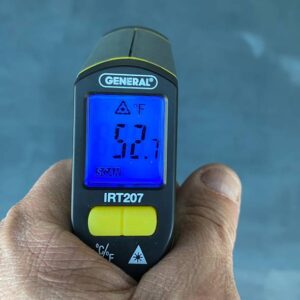
As long as you work in the early morning, you’ll be just fine.
If you have a garage that faces east and it’s a big job, you need to determine what time the sun rises. Count backwards to figure out what time you need to begin your install to have everything applied by sunrise.
When it’s hot like this, by the time the sun rises and starts baking the exposed outer lip the product is already dry. In these instances, you don’t have to worry about hot air in the product rising to the surface and forming bubbles, known as outgassing.
Think of it like this: outgassing is no different from an earthquake. You only feel an earthquake after the Earth gives way to pressure buildup. Outgassing is the same. Depending on the amount of air trapped underneath the coating, it will do nothing, create a bubble, or pop like bubble gum and leave a ring.
If you have bubbles, the best way to fix them is to sand the floor and use a leaf blower or vacuum to clean the surface depending on if you’re inside or outside. Then you must patch every single hole before you recoat. If you don’t, those holes are filled with air and your recoat will bubble up again.
One way to make sure your 100% solid epoxy doesn’t outgas is to use an aggressive bubble reducer product. If your floor does outgas, the bubble reducer will pop the bubbles and self-level.
